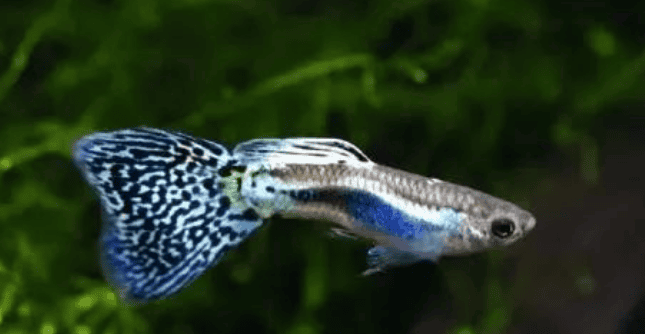The suitable temperature for guppies is between 22 and 26 degrees. I generally control it between 22 and 24 degrees for adult fish, and between 24 and 26 degrees for juvenile fish. Some aquarists raise the temperature of juvenile fish to 27 or 8 degrees Celsius, believing that only in this way will the juvenile fish be active, increase their food intake and metabolism, and grow faster. This is true, but the negative effects of this high temperature have been ignored. Lost.

Bait
For bait, it mainly refers to the type of bait, the amount of feeding and the number of feedings per day, as well as the adjustment of increasing the variety of bait and the amount of feeding as the fish ages.
I will not feed the newly born guppies that day, because firstly, they need to adapt to the environment, and secondly, the yolk sac has not been fully absorbed. Haha, guppies are ovoviviparous. Starting from the second day, it is best to start eating with live brine shrimp larvae, which are rich in nutrients and easy to absorb, and also have the effect of promoting defecation.
During this period, the fish should eat as much as possible until their belly becomes hemispherical. At this time, a little live bait can still be left in the tank. My brother summed up a proverb: "Try to hold on for 4 weeks, feed hard for 2 months, eat enough for 3 or 4 months, and feed less after May."
Since the brother has another job, he can only take time to feed the fish twice a day in the morning and evening during this period. Especially after feeding in the morning, it is better to keep a little live bait in the fish tank. During this period, according to the standards of professional players in Europe, America, Japan, etc., they should be fed 6 to 8 times a day, with an interval of about 2 or 3 hours each time. This feeding method can be used as a reference by professional players.

Density
Regarding the stocking density of fish, my tank is 40*25*30 cm, and my stocking density is about 50 to 60 fish. If the density is too high and the water quality cannot be controlled, it will easily cause disease, so be careful! If the density is too small, there will be few fish in the tank, and the fish will not have to fight for food, which will lead to excitement and lack of movement, thus affecting the growth rate. This is something that many players have not noticed and need to pay attention to.
Generally after 2 weeks, we will see that as the fish grows, the density of the tank also increases. At this time, if the space is not increased, it will affect the growth of the fish. growth rate. At this time, I moved them to my 50*40*30 tank to give them a wide space and provide better conditions for their further rapid development.
Notes
1. Small fish should be kept alone, otherwise they will be eaten by big fish.
2. It is best to use the water in the original tank. Small fish are fragile and very sensitive to environmental changes and can easily die.
3. Feed egg yolk water or brine shrimp in the first few days after birth. For eggs, if you use egg yolk water, it should not be too thick. Just a little bit of boiled egg yolk, crush it and dissolve it into the water. If the amount is too much, it will damage the water quality. If this amount is dissolved in the water, you will hardly see much change with the naked eye.
4. If it is a little bigger, you can buy water fleas to feed it after three days. You can also feed it with dry feed, but it will grow faster if you feed it live food.
5. Don’t change the water too much, just less than half is enough. If the water is not dirty, don’t change it. Even if you change the water, you must use water that has been trapped for two days, and keep the water temperature on both sides consistent.

 扫一扫微信交流
扫一扫微信交流
发布评论